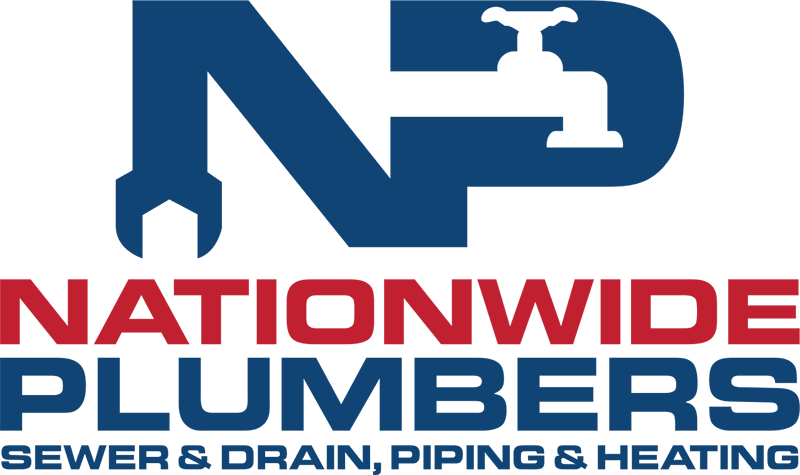
Plumbing issues are one of the most common problems home inspectors find during their assessments. A leaky faucet or slow drain you might overlook could turn into a costly nightmare down the line. As a potential home buyer, you must know about signs of plumbing issues to avoid unexpected expenses and major headaches.
No one wants to move into a new home, only to discover hidden leak that causes a water damage or a faulty water heater that leaves you with cold showers. These plumbing essential problems can disrupt your daily life and also significantly impact your wallet.
In this blog post, we’ll provide you with a step-by-step checklist for conducting an initial plumbing inspection. You’ll learn about everything from checking for leaks and water pressure to inspecting the water heater and sewer system.
1. Checking Faucets and Sink
Leaky faucets are not just annoying, they’re a sign of potential plumbing problems and wasted water. During your inspection, turn on every faucet in the house – hot and cold. Look under sinks for any signs of leaks or water damage. While you’re at it, check the water pressure. A weak flow could indicate clogged pipes or other issues lurking in the system.
Next up, let’s talk drainage. Nobody wants a sink that takes forever to empty. You should fill each sink with a bit of water and then pull the plug. Watch closely to see how quickly the water drains. Slow drainage might mean a clog somewhere in the pipes, and that’s something you’ll want to address before moving in.
Don’t forget to check for any gurgling sounds as the water goes down, that can be a sign of venting issues. A thorough inspection of your faucets and sinks is key to avoiding plumbing surprises down the road. So, put on your detective hat and get ready to uncover any hidden issues before they turn into major headaches.
2. Evaluating Water Heaters and Pipes
Inspecting water heaters and pipes is also essential. You should check its age – if it’s nearing the end of its lifespan (usually around 10-15 years), it might be time to consider a replacement.
Also, look out for any rust, leaks, or strange noises. These could be signs that trouble is brewing, and you don’t want to be left in the cold.
Don’t forget the pipes during home inspection. They hidden pathways carry water throughout your home, so their condition is crucial. Keep an eye out for any visible signs of corrosion, leaks, or discoloration. If you spot any suspicious stains on ceilings or walls, it could indicate a hidden leak within the walls.
Also, pay attention to the type of pipes used. Older homes might have outdated materials like galvanized steel, which are more prone to corrosion and leaks.
A well-functioning water heater and healthy pipes are essential for a comfortable and worry-free living experience. If you notice any red flags during your inspection, don’t hesitate to call in a professional plumber for a more thorough assessment. It’s always better to be safe than sorry when it comes to your home’s plumbing!
3. Inspecting Toilets: Don’t Get Flushed Away
When it comes to plumbing, toilets are often taken for granted – until something goes wrong! During your inspection, give each toilet a thorough test drive. Flush it a few times and make sure it refills properly and doesn’t run continuously.
Check for any leaks around the base and listen for any strange gurgling sounds, which could indicate a clog or venting issue. Also, take a peek inside the tank to ensure all the components are in good working order.
A properly functioning toilet is essential for a comfortable and hygienic home. If you notice any leaks, clogs, or other issues during your inspection, it’s time to call in a professional plumber. And if you experience a major plumbing emergency like a sewage backup or a burst pipe, don’t hesitate to reach out to an emergency plumbing service near you. They’ll be there to save the day and keep your home’s plumbing flowing smoothly.

4. Sewer and Drainage System Inspection
Sewer and drainage system silently whisk away wastewater and keeping everything flowing smoothly. But what happens when things get backed up? That’s when the trouble starts! During your inspection, be on the lookout for any signs of potential blockages or sewer issues. Slow drains, gurgling sounds, or unpleasant odors can all be red flags. Also, keep an eye out for any soggy spots in your yard, as these could indicate a leak in the underground pipes.
Preventing sewer and drainage problems is key to avoiding costly repairs and messy situations. Be mindful of what you flush down the toilet or pour down the drain. Avoid grease, hair, and other debris that can clog the pipes. Regular maintenance, such as having your drains professionally cleaned, can also help keep things flowing freely.
When it comes to sewer and drainage issues, it’s always best to err on the side of caution. If you suspect any problems, don’t hesitate to call in a professional plumber for a thorough inspection. They have the tools and expertise to diagnose and fix any issues before they escalate into major headaches. And if you experience a major sewer backup or other plumbing emergency, don’t wait – reach out to an emergency plumbing service near you right away. They’ll be there to save the day and keep your home’s plumbing system in tip-top shape.
Are you facing a plumbing crisis and require emergency plumbing service near me? If so, you can contact Nationwide Plumbers. Serving Brooklyn for over 40 years, we’re licensed, insured, and ready to solve your emergency.
Our expert team handles everything from plumbing and sewer & drain cleaning to heating, gas services, sewer inspections, boiler repair & installation, and Local Law 152 compliance. When you need immediate, professional service, we’re here to respond 24/7.
